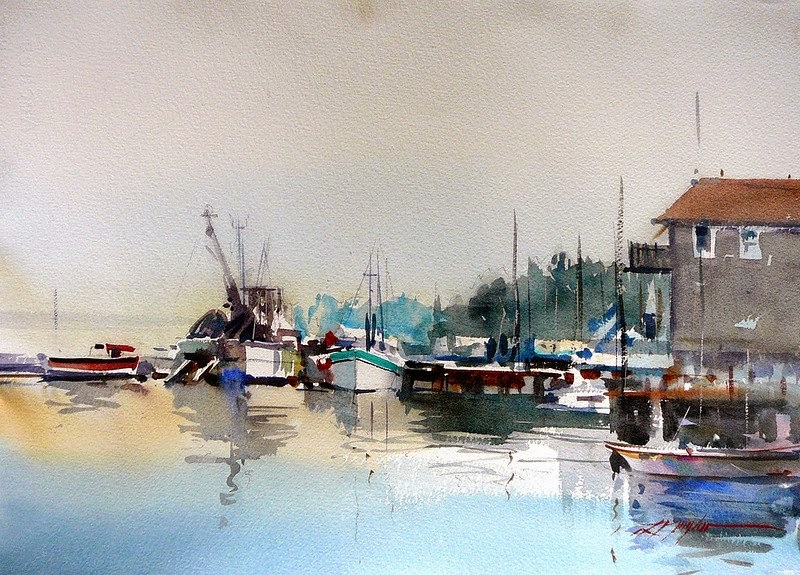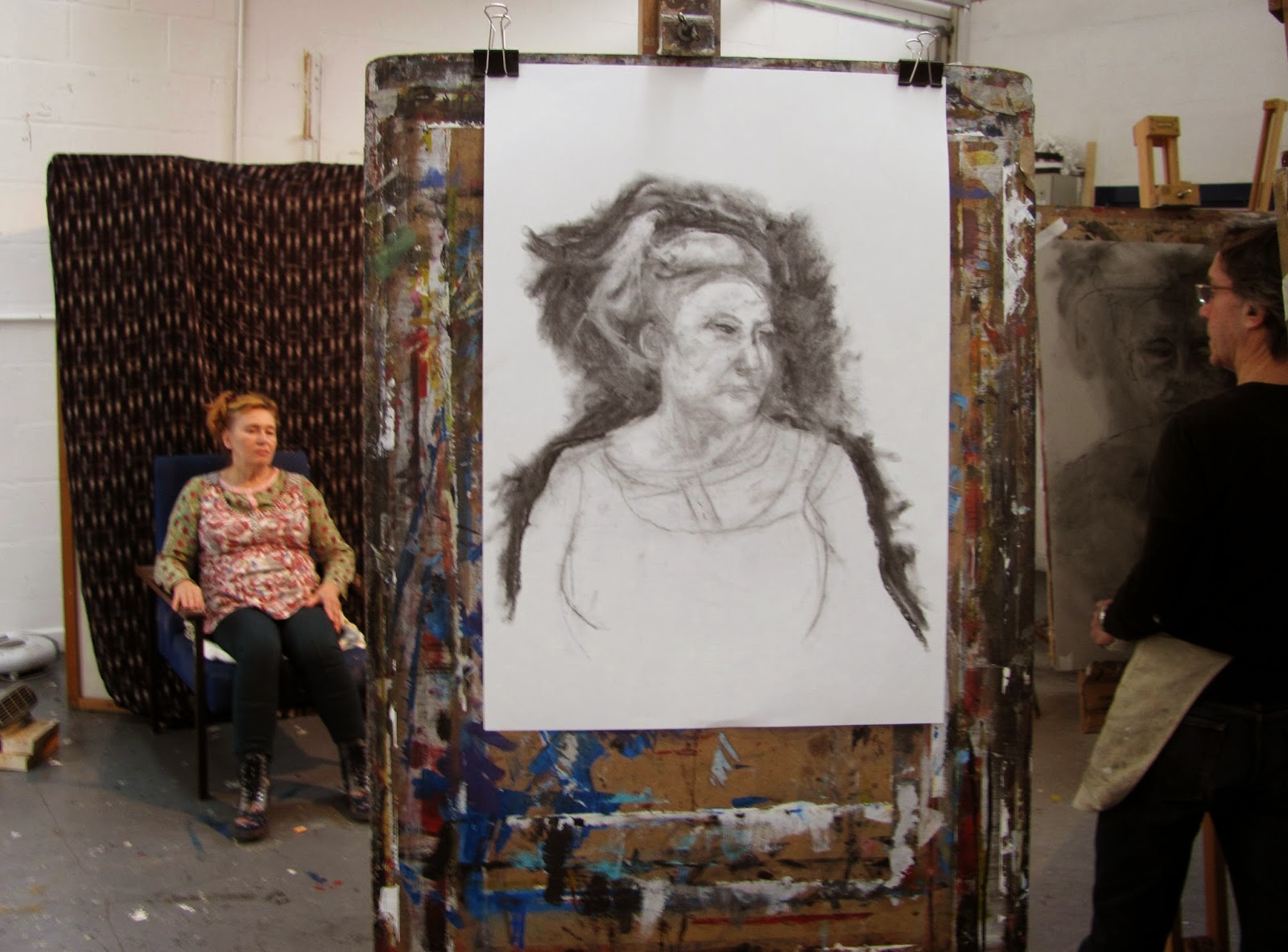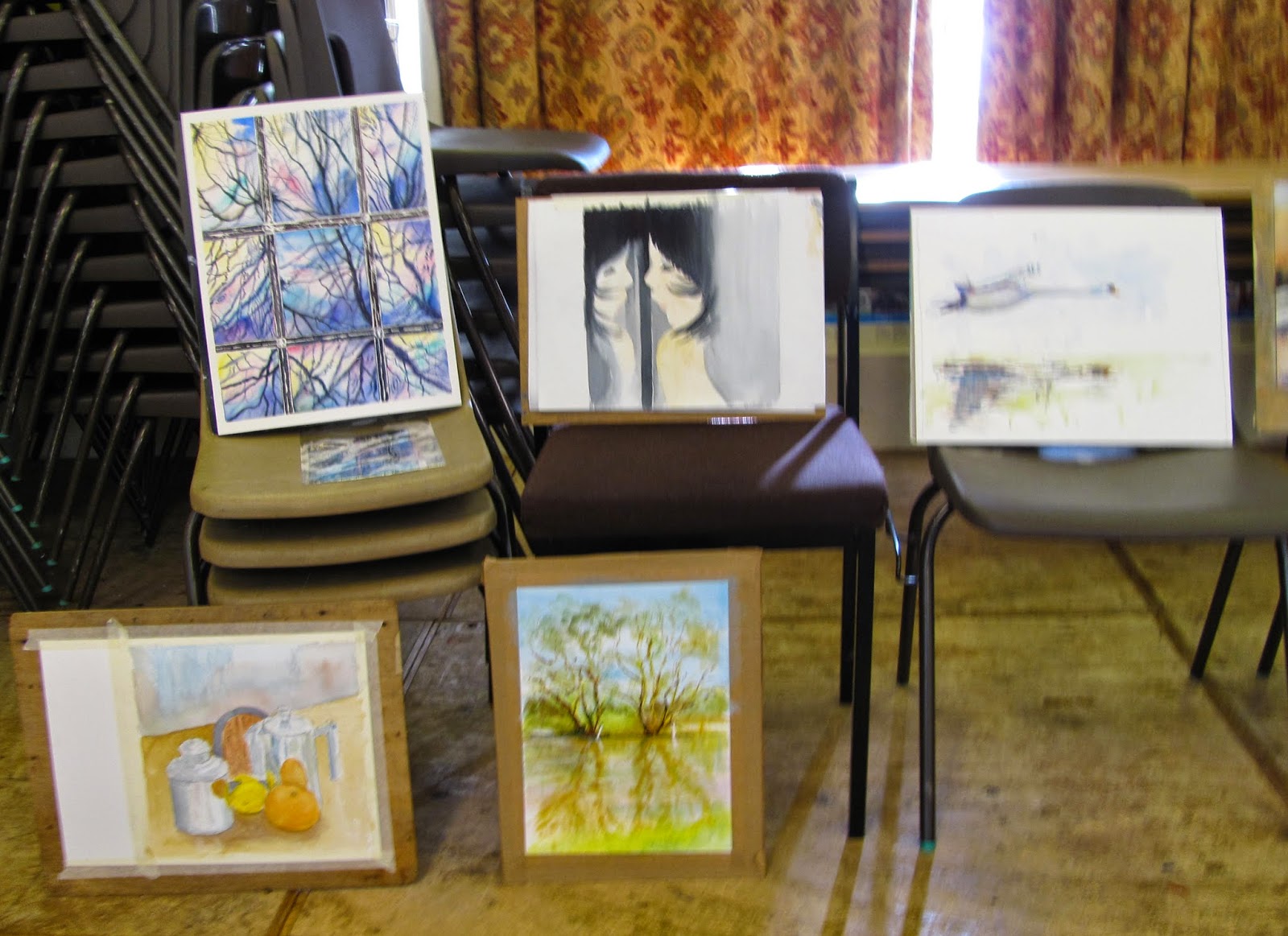Recently one of my painting friends and senior member of Avon Valley Artists - Yvonne Harry - has been engaged in an exchange of e-mails with Daniel Smith over the DS version of Indian Yellow. Essentially Yvonnes complaint was that the colour was simply not recognisable as Indian Yellow as understood by artists.
To give a little background it was originally, so we are told, produced in India in a revolting manner, cows being fed a particular type of leaf to produce a highly pigmented yellow cow dung from which the paint was extracted. I have since read that this story is questionable but has been repeated time and again. As in other cases where the natural pigment became unavailable, or was ruled out on various other grounds, the paint manufacturers have produced alternatives under the same name. This then becomes complicated when there is no unanimity on what pigments to use. With regard to `Indian Yellow' the most popular pigment seems to have been PY153, although Winsor & Newton called its PY153 paint `New Gamboge'.

The above swatches are from Yvonne and illustrate what she means about the colour being `off key' for want of a better description. I don't have the DS version being very happy with the much cheaper Daler Rowney version, which is PY153 until they run out. I have managed to buy a number of tubes so they should last a while!
Indian Yellow, as sold by all other makers is on the orange side of yellow - a deep yellow in other words - whereas the DS version seems - to my eyes from the `Try -it' colour sheet - more inclined to a muddy orange. It is PY108 a different pigment to other makers. I realise that personal preference is a factor here and other views may differ.
The plot thickens when another of the AVA senior artists, Jan Weeks, reported that her latest tube of `Moonglow' was a different shade to the previous one. Jan is a very experienced and talented artist so she cannot be easily dismissed.
Different shades? What do you think?
`Moonglow' is a mixed pigment paint PG18/ PB29/PR177. A green, blue and red combination. Despite being a three pigment mix it has become a favourite of many.
Yvonne was initially very annoyed at the response from Daniel Smith, which was rather patronising, but she is a determined lady and after further correspondence that changed. In fact she has now received three 15ml tubes, Serpentine Green, Bordeaux and Carbazole Violet FOC as a peace offering and all is now well, although her opinion of Indian Yellow remains. She gave me a `sqeeze' of all these colours and they are lovely.
I think I should emphasize this isn't a general criticism of Daniel Smith paints. There is universal agreement they are excellent and handle beautifully, if somewhat expensive in Europe. The range is huge and there are so many tempting colours that are hard to resist, the inclination is to buy colours you don't really need. I've done it but then face the problem of how to use them. Artists palettes vary in size but I would think the majority are in the 12 - 24 range. Daniel Smith produce well over 200 colours and do you really need up to 20 reds, 20 yellows etc? All it does is confuse the issue of what to buy. I think the Primateks are a different matter and would refer to the piece Bruce McEvoy of Handprint wrote about them some time ago.
I do have one issue with Daniel Smith though. Sometime ago I read they had developed a method of making multi pigment paints behave as though they were a single pigment. This has implications when mixing with other colours.This applied to the Cadmiums where a `hue' equivalent was offered. I e-mailed them and enquired whether they did the same thing with other mixed pigment paints. I received no reply and a second e-mail also went unanswered.






































